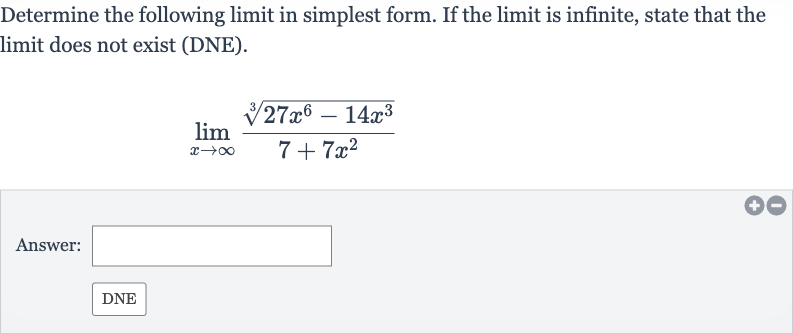Full solution
Q. Determine the following limit in simplest form. If the limit is infinite, state that the limit does not exist (DNE).Answer:
- Factor out highest power: We are given the limit expression:To simplify this expression, we will first factor out the highest power of in the numerator and denominator.
- Factor out : In the numerator, the highest power of inside the cube root is . We factor out from each term inside the cube root:
- Take outside: Now we take outside of the cube root, remembering that when we take a power out of a root, we divide the exponent by the root index: \sqrt[\(3]{x^{()}(/x^{()})} = x^{(/)} * \sqrt[]{/x^{()}} = x^ * \sqrt[]{/x^{()}}
- Factor out : In the denominator, we factor out from each term:
- Rewrite with factored terms: Now we rewrite the limit expression with the factored terms:
- Divide by : We can now divide both the numerator and the denominator by :
- Simplify expression: Simplifying the expression by canceling out in the numerator and dividing each term in the denominator by gives us:
- Approach infinity: As approaches infinity, approaches and also approaches . Therefore, the limit simplifies to:
- Simplify further: The cube root of is , so the limit simplifies further to:
- Final limit: Since is a constant, the limit as approaches infinity is simply .
More problems from Power rule
QuestionGet tutor help
QuestionGet tutor help
QuestionGet tutor help
QuestionGet tutor help
QuestionGet tutor help

